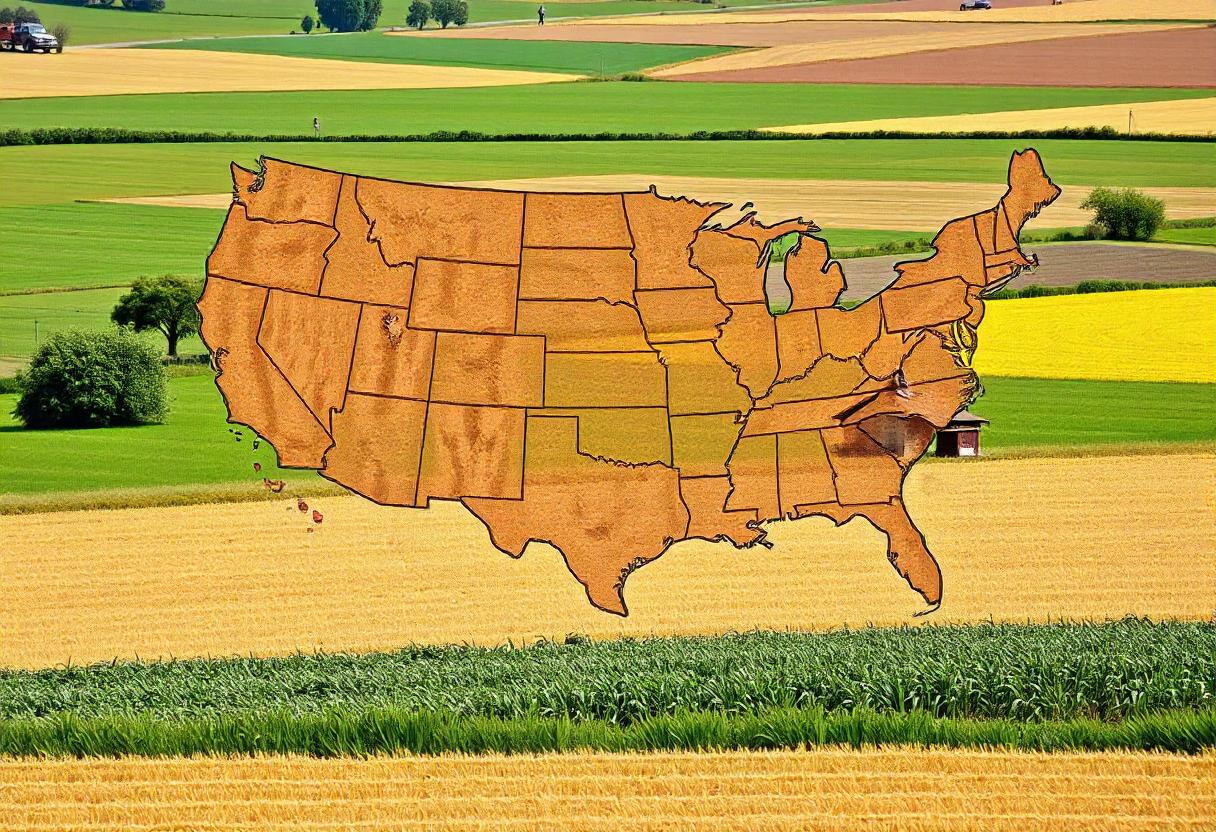
Agriculture is a cornerstone of the United States economy and culture, with the sector contributing significantly to the nation’s gross domestic product (GDP) and employment. The USA is a major global player in agriculture, producing a diverse range of crops and livestock that are vital both domestically and internationally.
Major Agricultural Regions
The United States boasts several key agricultural regions, each specializing in different types of farming due to varying climates and soil types.
- The Corn Belt: This region, located in the Midwest, is renowned for its extensive corn production. States such as Iowa, Illinois, and Nebraska dominate this area, which benefits from fertile soil and favorable weather conditions.
- The Wheat Belt: Spanning parts of the Great Plains, this region includes states like Kansas, Oklahoma, and Texas. It is characterized by large-scale wheat farming, with winter and spring wheat being the primary varieties.
- The Dairy Belt: Concentrated in the northern parts of the Midwest and Northeast, this region includes states like Wisconsin, Minnesota, and New York. The Dairy Belt is known for its significant milk and cheese production.
- The Cotton Belt: Located in the Southern United States, particularly in states such as Texas, Georgia, and Mississippi, this region focuses on cotton cultivation, which is crucial for the textile industry.
Key Crops and Livestock
The USA’s agricultural output is both varied and substantial, encompassing numerous crops and livestock products.
- Corn: As the most significant crop in the USA, corn is used for food, feed, and biofuel. The country is one of the leading producers of corn globally.
- Soybeans: Another major crop, soybeans are crucial for animal feed, oil production, and as a food ingredient. The Midwest, particularly states like Illinois and Indiana, is a primary growing area.
- Wheat: The USA produces various types of wheat, including hard red winter, hard red spring, and soft red winter, which are essential for baking and other food products.
- Cotton: Cotton production in the USA is vital for the textile industry. The Southern states are the primary cotton-growing regions.
- Livestock: The USA is a leading producer of beef, pork, and poultry. States like Texas and Nebraska are known for their cattle ranching, while states like Iowa and North Carolina are significant in pork and poultry production.
Agricultural Technology and Innovation
The agriculture sector in the USA is at the forefront of technological advancements. Innovations in farming practices, machinery, and biotechnology have significantly increased efficiency and productivity.
- Precision Agriculture: This approach uses GPS, sensors, and data analytics to optimize field-level management. It allows farmers to apply inputs more precisely, improving crop yields and reducing waste.
- Genetically Modified Crops: The use of genetically modified organisms (GMOs) has enhanced crop resilience to pests, diseases, and environmental conditions, leading to higher productivity.
- Sustainable Practices: There is a growing emphasis on sustainable agriculture, including practices like conservation tillage, crop rotation, and organic farming to maintain soil health and reduce environmental impact.
Challenges Facing American Agriculture
Despite its successes, American agriculture faces several challenges that impact the sector’s sustainability and productivity.
- Climate Change: Variability in weather patterns and extreme weather events pose risks to crop yields and livestock health. Farmers must adapt to changing conditions and manage resources more efficiently.
- Trade Policies: International trade agreements and tariffs can affect the profitability of American farmers by influencing export markets and input costs.
- Labor Shortages: The agriculture sector often relies on seasonal labor, and shortages can impact planting, harvesting, and overall productivity.
- Environmental Concerns: Issues such as water usage, soil erosion, and pesticide runoff require ongoing attention and management to ensure the long-term health of agricultural ecosystems.
Government and Policy Support
The U.S. government plays a crucial role in supporting the agriculture sector through policies, subsidies, and research initiatives.
- Farm Bill: This comprehensive legislation provides financial support to farmers, funds conservation programs, and outlines food assistance programs for low-income individuals.
- Research and Development: Federal and state agencies invest in agricultural research to develop new technologies, improve crop varieties, and address emerging challenges.
- Conservation Programs: Various programs aim to promote sustainable practices, protect natural resources, and support environmental stewardship in agriculture.